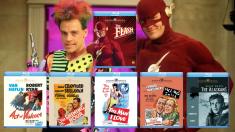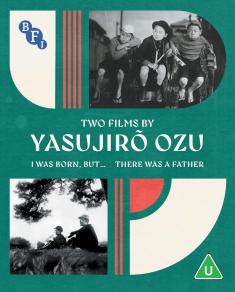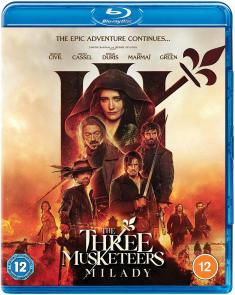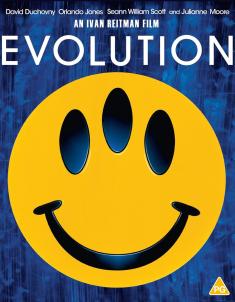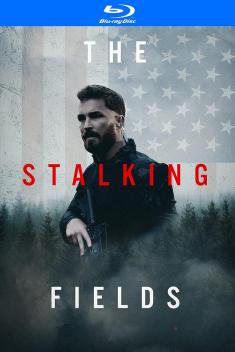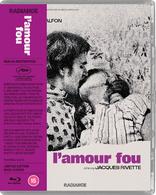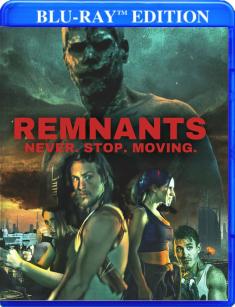The Exorcist: The Complete Anthology
Overview -
Here it is.The scream of the crop. The scariest and most fascinating collection of movies in modern horror. At the center of these ultimate clashes between darkness and light are intrepid souls who dare to look evil in the eye and unsheathe the weapons of faith. The struggle begins with the trend-setting The Exorcist (presented it its original theatrical version and Extended Director's Cut). Exorcist II: The Heretic and The Exorcist III bring added perspectives, blood-curdling visuals and shocks to the harrowing tale. And the two prequel stories (by two different directors) of Dominion and The Beginning enrich the original by revealing the amazing genesis of the battle between Father Merrin and humanity's most insidious foe.
Storyline: Our Reviewer's Take

Looking back now, it's almost hard to imagine what a sensation 'The Exorcist' caused when it was originally released in 1973. The film, a tale of a young girl's battle with demonic possession and the two priests who attempt to save her soul, hit popular culture like a shockwave. It was (briefly) the highest-grossing movie of all time, was denounced as a work of evil by blowhard religious evangelists, and was nominated for ten Oscars, including most of the big ones. These were all unprecedented achievements for a work of horror fiction. (Well, maybe not the part about being denounced by religious types.)
'The Exorcist' has also garnered a reputation as the so-called "scariest film of all time," and its staying power over the years would seem to back that up. Of course, familiarity and four decades of imitation have unavoidably diluted its visceral impact, and we as a culture have perhaps grown too jaded to feel scared by any movie (or fiction in general) anymore. Even so, the film continues to be regarded fondly, and the reason for that is clear: Scary or not, it's an excellent movie. Despite its gross-out special effects and blunt shock scares, there's actually a great story at the heart of the film, with a tremendous amount of both psychological and theological depth.
Still to this day, 'The Exorcist' stands firmly unto itself as a complete work, and has never either needed nor invited the franchise treatment of a series of sequels to draw out its story. Nevertheless, success breeds greediness, and no Hollywood studio could resist an opportunity to cash-in on such a major blockbuster with a follow-up. Because neither director William Friedkin nor author William Peter Blatty wanted any part of that, the dubious responsibility was handed to John Boorman, a pretty smart if erratic filmmaker who'd been very acclaimed for his movies 'Point Blank' and 'Deliverance', but who was just then coming off the weird sci-fi fiasco 'Zardoz'. Boorman reportedly hated 'The Exorcist', which he considered a work of child exploitation. If he were to helm a sequel, he wanted it to be less a continuance of the original film than a corrective against it.
'Exorcist II: The Heretic' follows a new priest, Father Lamont (Richard Burton), who's assigned by the Vatican to investigate the famed exorcism in Georgetown. This brings him in contact with victim Regan MacNeil (Linda Blair), now a teenager who seems to have her life together. But Father Lamont senses that the demon Pazuzu is still inside her, and embarks on a quest to trace its roots to Africa and its connection to an event in the past of original exorcist Father Merrin (Max von Sydow).
Released in 1977, 'Exorcist II' was savaged by critics and was a notorious box office bomb. It's often cited as one of the worst sequels of all time, if not one of the worst films of all time. Some of that hyperbole is overstated. Boorman made a legitimate attempt to expand upon the story and themes of the original movie while taking them in a new direction, rather than simply spitting out a carbon copy. His intentions were admirable. Sadly, his execution was lacking. The sequel is badly crippled by a lot of hammy acting, the inclusion of ridiculous pseudoscience involving a far-fetched hypnosis synchronizer machine, and some incredibly cheesy and misguided dream and fantasy sequences. Worse, the movie is just really dull, and that's a sin very hard to forgive. On the other hand, it has a pretty exciting climax that Steven Spielberg liberally cribbed for the ending to his later hit 'Poltergeist'.
For a time, the failure of 'Exorcist II' seemed to kill 'The Exorcist' as a viable franchise. However, in 1983, author William Peter Blatty penned a spin-off novel called 'Legion' that featured some of the supporting characters from the original story. He was keen to direct a movie version himself. That eventually came to pass in 1990. Unfortunately, the studio that financed the picture, Morgan Creek Productions, didn't care for what Blatty delivered, and forced him to make some big cuts and changes before release, including a new title of 'The Exorcist III' (even though Blatty refused to acknowledge the legitimacy of 'Exorcist II') and the addition of an exorcism scene at the end to sell the franchise connection.
The rechristened 'Exorcist III' stars George C. Scott as Lt. Kinderman, the police detective formerly played by the late Lee J. Cobb. With a number of years separated from the Georgetown exorcism, a serial killer called Gemini is terrorizing the town. On the case, Kinderman tracks him to a mental institution, where he finds incarcerated a familiar figure from his past who exhibits signs of possession by a very bitter demon.
Even though it was written by the same author, 'Exorcist III' is wildly different in tone from 'The Exorcist'. It's a weird, idiosyncratic movie filled with quirky characters and bizarre dream sequences. It's also quite unexpectedly funny. (Blatty started his career as a comedy writer.) The film is very uneven, is quite noticeably hampered by studio meddling and goes off the rails at the end, but it has a number of really terrific scenes, including one clockwork suspense sequence that's remarkably ingenious at subverting viewer expectations. Upon release, both critics and audiences got too caught up in comparing the film to 'The Exorcist' and didn't know what to make of it. The movie was a box office disappointment, but has built a cult following and is seriously underrated.
Jumping forward another decade, Warner Bros. regained the rights to the 'Exorcist' franchise and desired to relaunch the series with a new prequel movie centered around a younger version of the Father Merrin character. After director John Frankenheimer dropped out due to health issues, the studio hired respected screenwriter and occasional director Paul Schrader ('Taxi Driver', 'Auto Focus') to make the movie. He cast Stellan Skarsgard in the lead and delivered a picture that he intended as a thoughtful meditation on the themes of religion and morality, with a touch of demonic possession thrown in for color. This was not what the studio wanted. At all.
After his shooting had completed, Schrader was fired and the studio brought in Renny Harlin ('Die Hard 2', 'Cliffhanger') to reshoot almost the entirety of the movie, retaining Skarsgard and some of Schrader's sets, but working from a brand new script. Under a tight deadline, Harlin cranked out exactly the type of movie that the studio wanted and that he was capable of making – a straight-on horror picture loaded with tons of shock effects and gross-out gore.
'Exorcist: The Beginning' journeys back in time to 1949, where disillusioned, drunken former priest Merrin is playing Indiana Jones. He's an archaeologist hired to dig up a mysterious Christian temple in Africa that dates back to centuries before records indicate that Christianity came to the region. Doing so unleashes an evil pagan demon that was buried under the church. The demon soon terrorizes the local population and stirs up a race war between the indigenous natives and the occupying British army. This culminates in a badly-rendered CGI sandstorm, a plot twist that doesn't hold up to any scrutiny, a bunch of overblown action scenes and an absurd exorcism climax.
Roundly dismissed by critics, 'The Beginning' was a box office dud in 2004. Feeling a little humbled, and perhaps hoping to recoup some of its investment on all that unused footage from the first go-round, Warner Bros. allowed Paul Schrader to complete his version of the movie for a very limited theatrical run followed by a video release the following year.
Schrader's film, now titled 'Dominion: Prequel to The Exorcist' shares the same basic plot set-up as 'The Beginning' (young Merrin the archaeologist, temple in Africa, racial strife), but handles it in a decidedly less crude, crass or bombastic fashion. The movie is contemplative and spiritual in tone. Unfortunately, it's also boring as hell, quite cheesy in its own respects, and ultimately has little of interest to say. Despite shooting on the same sets, it also looks extremely chintzy. 'Dominion' is ultimately just as bad a movie as 'The Beginning', but without even a hint of fun. At least Renny Harlin had no pretentions about what he was doing.
When all is said and done, the 'Exorcist' franchise amounts to one great movie, one pretty interesting movie that probably doesn't need to be tied to the 'Exorcist' brand, and three fairly bad movies. That's a rather poor success rate, to be sure. However, in this case, even the failures are fascinating, and that's more than most horror franchises (even the successful ones) can boast.
Warner Bros. Entertainment released the original 1973 horror classic 'The Exorcist' twice before on Blu-ray, first in 2010 as a two-disc Digibook package with both versions of the movie (Theatrical Cut and greatly inferior Director's Cut), then again in 2013 as a 40th Anniversary Edition that added a third disc of newer bonus features. The Complete Anthology box set recycles the first two discs for that movie, then adds four all-new discs for its sequels.
The Anthology collection marks the first time that the 'Exorcist' sequels have appeared on Blu-ray. Separate standalone editions of 'Exorist II: The Heretic', 'The Exorcist III' and 'Exorcist: The Beginning' are also available simultaneously. However, the box set appears to be the only way to get 'Dominion: Prequel to The Exorcist' in high definition.
All six discs are stored in a crowded plastic keepcase that slides into a cardboard box featuring the first film's very familiar and overused poster art. It may not be terribly fancy packaging, but it's surprisingly space-conscious for a collection of so many movies.
Video Review
Back when the original Blu-ray for 'The Exorcist' was released in 2010, I rated the 1080p/VC-1 transfer (both versions of the movie look basically the same as one another) quite highly, and I think it has held up pretty well in the meantime. The first two discs in the Complete Anthology box set are 100% unchanged since that first release. The movie has always had rather erratic and frequently rough-looking photography. Some shots with stunning clarity are mixed with others that are very soft and heavily grainy, even within the same scenes. Significant portions of the film were also shot with diffusion filters over the lens, as was the style of the day. Despite this, the Blu-ray has a strong representation of detail and very nice colors. On the flipside, the digital compression leaves something to be desired, resulting in some noisy grain patterns and occasional color banding artifacts. I wish Warner Bros. would re-encode the disc, but failing that, this is still the best the movie has looked on home video.
Only the first movie uses VC-1 compression (on both versions). The Blu-rays for all of the sequels were authored recently using the AVC/MPEG-4 format instead.
Regardless of compression codec, the video transfer for 'Exorcist II' is atrocious. The majority of the movie is so soft that it's practically out of focus. It's also swamped in extremely heavy, coarse film grain. Colors are very dull and drab. While some of these faults may be attributable to the original photography (which is a victim of some of the worst cinematography fads of its time), and the studio doesn't appear to have applied any Digital Noise Reduction or unwanted digital processing, the film elements look like they're several generations away from the source. I'd guess that this is a quite old high-def master made without any special care. I'm sure that the movie could undoubtedly look a lot better with a fresh film scan of the original negative, but the chances of Warner exerting that kind of effort for a picture as marginal as 'Exorcist II' are extremely unlikely.
Made 13 years after the last entry, 'The Exorcist III' has a very different visual style than either of its predecessors. The film was shot and lit much brighter in general, with stronger contrasts and less harsh grittiness or heavy grain. Although the Blu-ray may be sourced from another old video master, and hasn't received as much special attention as 'The Exorcist', it certainly comes across a lot better than 'Exorcist II'. The 1080p image is a little softish and sometimes grainy, but mostly has good detail and looks very respectable overall.
The aspect ratios for the first three movies have all been very slightly (and negligibly) opened up from their original 1.85:1 theatrical framing to 1.78:1, as is Warner's policy. This does not affect their compositional intent.
Both 'Dominion' and 'Exorcist: The Beginning' were shot by famed cinematographer Vittorio Storaro, who champions a goofy film format of his own invention called Univisium, which utilizes an aspect ratio of 2.0:1 even though no cinema in the world is actually equipped to project movies at that ratio. 'Exorcist: The Beginning' was projected in theaters cropped down to 2.40:1. The Blu-ray transfer measures 2.35:1. Normally, I consider this difference insignificant, but it may have more relevance here. Although the framing looks a little tight on the top and bottom, it's generally sound. For some reason, Warner has chosen to transfer 'Dominion' to Blu-ray at 1.78:1. I'm not sure whether that entailed cropping on the sides or opening the mattes off the top and bottom. It may have had a bit of both.
Despite having the same cinematographer, these two movies don't look anything at all alike. 'Dominion' was shot and lit blandly like a TV movie, while 'Exorcist: The Beginning' has a more stylized appearance with heavy color filters, especially dingy yellows and browns to evoke a dusty look. I'm not particularly a fan of either.
For what it is, 'Exorcist: The Beginning' generally looks decent, with nicely detailed close-ups and a light presence of film grain. Wide shots are significantly softer and less impressive, however. Sadly, in addition to the aspect ratio issue, the video transfer for 'Dominion' has been distractingly processed with overt Digital Noise Reduction and Edge Enhancement sharpening. This leaves the picture with both mushy textures and a harsh digital grittiness. Additionally, some shots have serious optical flaws on the side of the screen (generally screen right), which leaves me to suspect that one of Storaro's cameras had a bad lens.
Audio Review
'The Exorcist' originally played theatrically with a mono soundtrack. The film was remixed into 5.1 surround for the 25th Anniversary DVD and the "Version You've Never Seen" theatrical re-release in 2000. The Blu-ray copies of both cuts are based on that remix. The Original Theatrical Version is encoded in DTS-HD Master Audio 5.1 format, while the Extended Director's Cut adds a matrixing metadata flag for 6.1. There is no mono option (in the original English) on either disc.
For a surround remix of monaural sound design, this one is pretty tasteful. The music has a fair stereo dimensionality, without too many gimmicky directional effects. The mix remains primarily focused in the center channel. As a film from 1973, the soundtrack can't help but show its age. While auditory detail is good, fidelity is often a little strident. Even so, many sound effects are sharp and clear, and the mix has a few impressively bassy moments (surely goosed during the remix).
No effort has been made to remix 'Exorcist II'. Its original mono is encoded on disc in DTS-HD Master Audio 1.0 format. For as bad as this movie's Blu-ray video looks, the audio sounds even worse. The soundtrack is extremely weak and is set for a very low default volume for seemingly no reason. Fidelity is terrible. The movie has a score by Ennio Morricone and attempts some possibly interesting things during the dream sequences, but neither comes across well here. Some really distracting ADR dubbing for the dialogue doesn't help matters much either.
'The Exorcist III' is better than the last entry, but has some issues. The DTS-HD Master Audio 5.1 has bright, sometimes raspy dialogue and very little surround activity. The volume seems off, with wild dynamic range swings between passages that are too quiet and others that are too loud. The movie also has quite a lot of loud, boomy bass that sounds hollow.
'Dominion' sounds… OK. The DTS-HD Master Audio 5.1 track has some very active surround channels and bassy growls. Fidelity is fine, if not particularly notable, much less exceptional.
Finally, the DTS-HD Master Audio 5.1 track for 'Exorcist: The Beginning' sounds pretty much exactly as you'd expect a Renny Harlin movie to sound. The film has hyper-aggressive surround activity with plenty of directional effects jumping around through every channel. The soundtrack is obnoxiously loud, with jolting stinger scares, piercing sound effects, and tons of bassy rumble. It's fatiguing after a while, but that's what you get with this sort of movie.
Special Features
Warner Bros. has not created any new content for any of the movies in the Anthology box set. The first two discs dedicated to 'The Exorcist' are exactly the same Blu-rays released previously in 2010, while the sequels port their very limited bonus features from older DVD editions.
The Exorcist: Theatrical Cut
- Introduction by William Friedkin (SD, 2 min.) – William Friedkin really needs to learn when to shut up and just let an audience watch his movies. Instead, he has insisted that the beginning of 'The Exorcist' be prefaced by this video introduction in which he describes his effort to make a "realistic film about inexplicable events." This annoying introduction will play every time you watch the movie unless you skip it by using the disc's Scene Selections menu.
- Commentary by William Friedkin – I have to be honest; I find the director's voice very annoying. He sounds just like Donald Trump. In his commentaries, he also has a habit of merely reciting the action on screen. In this track recorded for the 25th Anniversary DVD edition of the movie, Friedkin mostly sticks to relaying a stream of facts about the history of the production. It's not the worst commentary he's recorded, but it's pretty dry.
- Commentary by William Peter Blatty with Sound Effects Tests – The author's commentary is a little more interesting. He discusses the true story that inspired his novel, his career from comedy writer to this, his philosophical thoughts on good and evil, religion and the practice of exorcism. He also talks about his belief that the TV show 'Columbo' was a rip-off of his Detective Kinderman character. (Blatty's timeline is more than a little confused on that matter.) Unfortunately, Blatty only talks for about half the movie, and is then replaced with an isolated sound effects track.
- The Fear of God: 25 Years of The Exorcist (SD, 77 min.) – This retrospective documentary was produced by the BBC to celebrate the movie's 25th anniversary. The piece does a pretty thorough job covering the popular reaction and phenomenon that greeted the film's release, the religious controversy around it (Friedkin still sounds angry at Billy Graham), and many aspects of the production. Among the topics discussed: the alleged true story that the novel was based on, the studio's fear that that the film would flop, Friedkin's "unconventional" (read: borderline abusive) treatment of his cast and crew, the set fire and deaths during filming, Ellen Burstyn's back injury caused by a stunt, creating the sound of the demon's voice, and working with a child actor on such adult subject matter. (Linda Blair claims she had no concept of masturbation when the crucifix scene was shot.) On the subject of the cuts that Friedkin made during editing, the director was still adamant at the time of this documentary's filming that he made the right decisions, and even has an argument on camera with William Peter Blatty about it.
- Interview Gallery with William Friedkin and William Peter Blatty (SD, 9 min.) – These are extensions to the interviews filmed for the 'Fear of God' documentary. Friedkin and Blatty bicker some more about the footage that Friedkin cut from the movie. Both men argue eloquently for their respective views on the matter, especially Friedkin, who makes excellent points about the danger of revisionism in art. Unfortunately, this only makes it even more perplexing that, just a few years later, he would turn completely around on the issue and insist on making major changes to his older movies such as this one and 'The French Connection'.
- Original Ending (SD, 2 min.) – Raw footage from the (originally) unused ending. Much of this was reinstated into the "Version You've Never Seen" (a.k.a. the Director's Cut) except the last few lines of dialogue, for which the production audio is barely audible.
- Sketches & Storyboards (SD, 3 min.) – A silent montage of production art.
- Theatrical Trailers & TV Spots (SD, 7 min.) – Three vintage trailers (one very psychedelic) and five television ads. A couple of the commercials are intensely cheesy, but two of them are surprisingly effective.
The Exorcist: Director's Cut
- Commentary by William Friedkin – If you listened to the director's commentary on the theatrical cut, there's little need to bother with this one. Friedkin tells most of the same stories again. The track mainly consists of Friedkin describing what you can see on screen, as well as cataloging some of the changes made for this version of the movie.
- Raising Hell: Filming The Exorcist (HD, 30 min.) – This retrospective piece covers a lot of the same ground as the 'Fear of God' documentary on the theatrical cut disc, such as the makeup and special effects, working with a child actor, and Friedkin's goal of documentary-like realism. However, it's still worthwhile due to the significant amount of vintage behind-the-scenes footage shot by cinematographer Owen Roizman. In the end, all of the participants insist that 'The Exorcist' is not a horror film.
- Exorcist Locations: Georgetown Then and Now (HD, 9 min.) – A look at the settings used in the film, why they were important to the mood and style of the story, and how they've changed or not over the last three decades. Despite the title, this featurette also discusses the locations in Iraq and the studio work shot in New York.
- Faces of Evil: The Different Versions of The Exorcist (HD, 10 min.) – Friedkin explains why he cut some of the footage that didn't make the theatrical version of the movie. While his explanations seem perfectly sound, unfortunately these omissions made William Peter Blatty very upset. As the director describes it, he put together the longer version of the movie as a "favor to Bill." He claims that he has since come around to seeing things Blatty's way, and now also prefers the longer version. From an outside perspective, he was clearly right the first time around and should have left well enough alone.
- Theatrical Trailers, TV Spots & Radio Spots (SD, 7 min.) – Two trailers, three television commercials, and two radio ads for the 2000 "Version You've Never Seen" theatrical re-release. All play up the film's reputation and the extensions added. Amusingly, these also bring us back to a time when advertisers gave a damn about AOL keywords.
Exorcist II: The Heretic
- Alternate Opening Sequence (SD, 2 min.) – Surely, this additional bit of extended footage, comprised of still photos from the first movie with a voiceover recap of its plot, couldn't have ever seriously been considered as a viable way to start the sequel, could it? Yikes.
- Trailer (SD, 2 min.) – Holy Christ in a can! This is one of the most amazingly batshit crazy movie trailers I've ever seen. Brief clips from the movie are frantically edited into an orgiastic frenzy played to atrocious disco music! I wish the actual movie could have been as awesomely terrible as this trailer, rather than just really boring. I'm also disappointed that Warner couldn't be bothered to provide the clip in high definition.
- Teaser Trailer (SD, 1.5 min.) – This earlier teaser is decidedly less insane than the other trailer, and far less entertaining as a result. It just shows some lame still photos from the movie with a voiceover promising to be "a step beyond" the original 'Exorcist'.
The Exorcist III
- Trailer (SD, 1 min.) – This teaser trailer showcases very little actual footage from the movie it's advertising, instead focusing on its connection to the original 'Exorcist'. It also announces the film by its initial working title of 'The Exorcist III: Legion' before the 'Legion' part was dropped.
Exorcist: The Beginning
- Audio Commentary – I may have a newfound respect for Renny Harlin after listening to this commentary. The director speaks very eloquently (and frankly) about the movie's rushed production and where the final product falls short. He's extremely respectful to all of his collaborators. Although he doesn't mention Paul Schrader or the prior version of the movie he was brought in to reshoot (no doubt prohibited by the studio lawyers), I get the sense that he probably wouldn't badmouth it even if he could talk about it. Unfortunately, I still don't think his movie turned out as well as he does.
- Exorcist: The Beginning – Behind the Scenes (SD, 8 min.) – Here's a standard bit of EPK promotional fluff where the cast try to explain what the movie is about.
- Trailer (SD, 1 min.) – Hilariously, this early teaser trailer is comprised exclusively of footage shot for Paul Schrader's movie.
Dominion: Prequel to The Exorcist
- Audio Commentary – Just about the only thing duller than Paul Schrader's 'Exorcist' prequel is his audio commentary for that prequel. Schrader sounds tired and defeated. He doesn't talk about being fired by the studio nor about Renny Harlin's film at all. (Again, he probably wasn't allowed to discuss the production troubles.) He just tells boring stories about his shoot and what he was trying to accomplish. The commentary's a total yawn.
- Deleted Scenes (SD, 6 min.) – These extra scenes and scene extensions wouldn't have added anything worthwhile to the movie. They're presented in really dreadful quality standard definition.
HD Bonus Content: Any Exclusive Goodies in There?
The 'Complete Anthology' box set has no exclusive features.
The Cutting Room Floor: What Didn't Make the Blu-ray?
The Complete Anthology box set omits the third disc of additional supplements found with the 40th Anniversary Edition of 'The Exorcist'. Those included a half-hour retrospective featurette with author William Peter Blatty and 20 minutes of vintage interview footage with a Jesuit priest who had experienced real exorcisms. The new box also lacks the printed excerpt from William Friedkin's memoir, or the printed production notes, cast bios and trivia from the earlier Digibook Blu-ray.
'The Exorcist' is a horror classic that probably never needed the franchise treatment. Nevertheless, the film has generated both two sequels and two prequels so far. Honestly, the only of the later entries that's really worth a damn is 'Exorcist III', which can be bought separately (assuming you already have one of the previous Blu-rays for the original film). However, I find this entire franchise fascinating perhaps more for the stories of how the sequels and prequels got made than for the films themselves.
The Blu-rays in the Complete Anthology box set have erratic video and audio quality from film-to-film, and the only movie with any worthwhile bonus features is the first. Even so, the entire collection can currently be purchased for almost the same price as the Blu-ray edition of just the first movie on its own. If you're a fan, or even just curious about this franchise, this is a worthy purchase.






